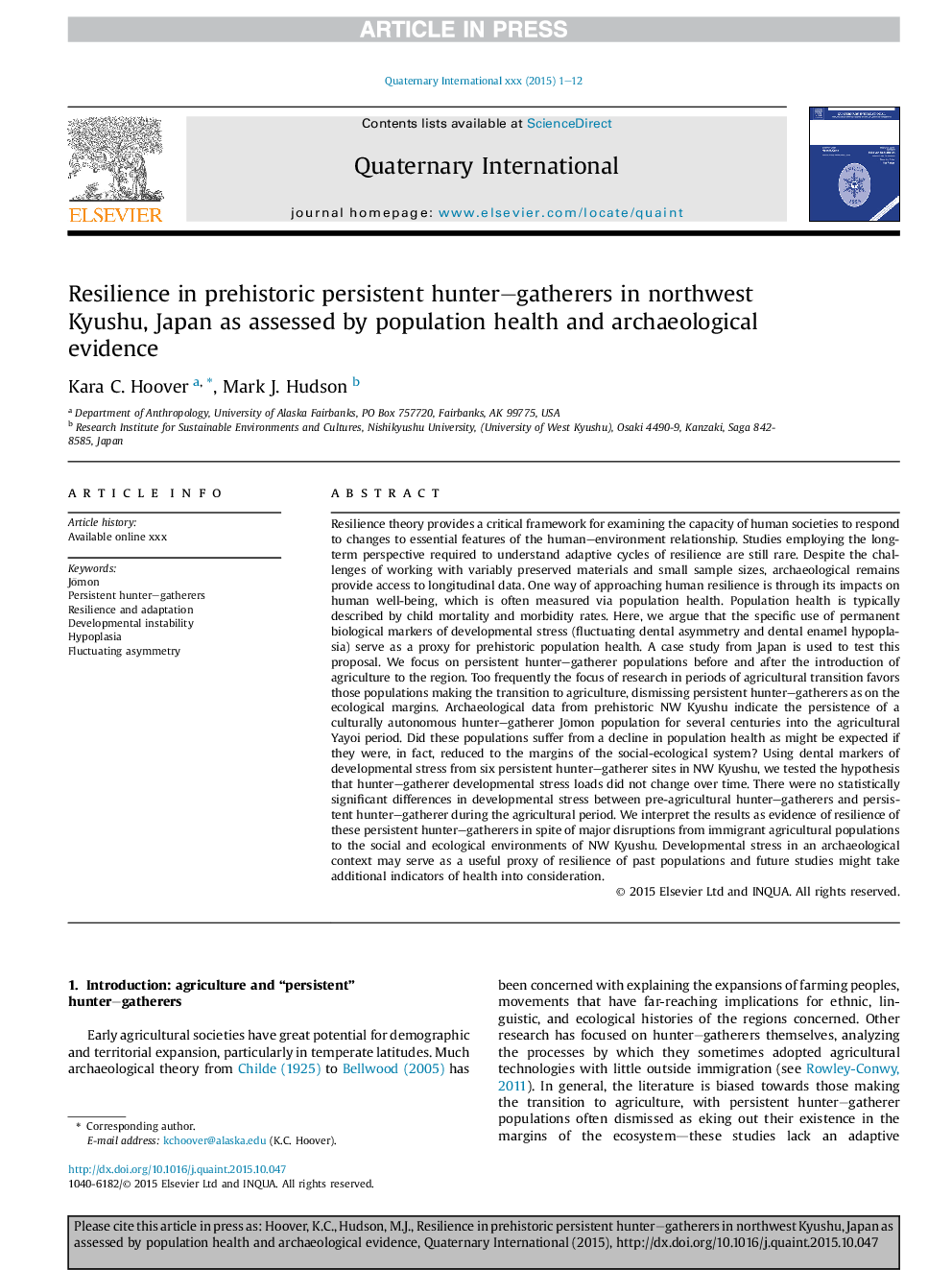| کد مقاله | کد نشریه | سال انتشار | مقاله انگلیسی | نسخه تمام متن |
|---|---|---|---|---|
| 10500879 | 944454 | 2016 | 12 صفحه PDF | دانلود رایگان |
عنوان انگلیسی مقاله ISI
Resilience in prehistoric persistent hunter-gatherers in northwest Kyushu, Japan as assessed by population health and archaeological evidence
دانلود مقاله + سفارش ترجمه
دانلود مقاله ISI انگلیسی
رایگان برای ایرانیان
کلمات کلیدی
موضوعات مرتبط
مهندسی و علوم پایه
علوم زمین و سیارات
زمین شناسی
پیش نمایش صفحه اول مقاله

چکیده انگلیسی
Resilience theory provides a critical framework for examining the capacity of human societies to respond to changes to essential features of the human-environment relationship. Studies employing the long-term perspective required to understand adaptive cycles of resilience are still rare. Despite the challenges of working with variably preserved materials and small sample sizes, archaeological remains provide access to longitudinal data. One way of approaching human resilience is through its impacts on human well-being, which is often measured via population health. Population health is typically described by child mortality and morbidity rates. Here, we argue that the specific use of permanent biological markers of developmental stress (fluctuating dental asymmetry and dental enamel hypoplasia) serve as a proxy for prehistoric population health. A case study from Japan is used to test this proposal. We focus on persistent hunter-gatherer populations before and after the introduction of agriculture to the region. Too frequently the focus of research in periods of agricultural transition favors those populations making the transition to agriculture, dismissing persistent hunter-gatherers as on the ecological margins. Archaeological data from prehistoric NW Kyushu indicate the persistence of a culturally autonomous hunter-gatherer JÅmon population for several centuries into the agricultural Yayoi period. Did these populations suffer from a decline in population health as might be expected if they were, in fact, reduced to the margins of the social-ecological system? Using dental markers of developmental stress from six persistent hunter-gatherer sites in NW Kyushu, we tested the hypothesis that hunter-gatherer developmental stress loads did not change over time. There were no statistically significant differences in developmental stress between pre-agricultural hunter-gatherers and persistent hunter-gatherer during the agricultural period. We interpret the results as evidence of resilience of these persistent hunter-gatherers in spite of major disruptions from immigrant agricultural populations to the social and ecological environments of NW Kyushu. Developmental stress in an archaeological context may serve as a useful proxy of resilience of past populations and future studies might take additional indicators of health into consideration.
ناشر
Database: Elsevier - ScienceDirect (ساینس دایرکت)
Journal: Quaternary International - Volume 405, Part B, 16 June 2016, Pages 22-33
Journal: Quaternary International - Volume 405, Part B, 16 June 2016, Pages 22-33
نویسندگان
Kara C. Hoover, Mark J. Hudson,